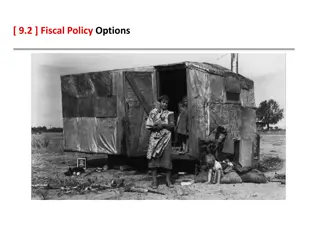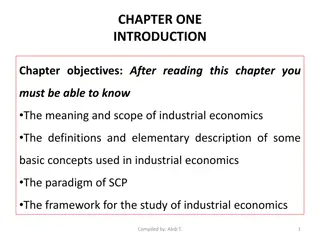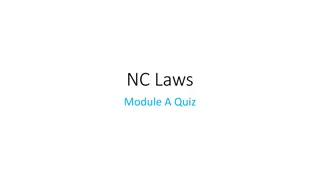Economics Concepts Explained Through Interactive Quizzes
Understand economic concepts such as consumer surplus, producer surplus, and market equilibrium through interactive quizzes with images. Test your knowledge on topics like bidding, sentimental value, market efficiency, and surplus calculations in a fun and engaging way.
Uploaded on Sep 07, 2024 | 1 Views
Download Presentation

Please find below an Image/Link to download the presentation.
The content on the website is provided AS IS for your information and personal use only. It may not be sold, licensed, or shared on other websites without obtaining consent from the author. Download presentation by click this link. If you encounter any issues during the download, it is possible that the publisher has removed the file from their server.
E N D
Presentation Transcript
Consumer surplus increases when the price increases. A. True B. False
The market equilibrium maximizes the sum of the producer and consumer surplus. A. True B. False
Producer surplus is the difference between willingness to pay and price paid for a good. A. True B. False
Imagine I ordered a pizza which I will distribute to the class via an auction. What is the most you would bid for a slice? A. $0 B. $0.50 C. $1.00 D. $1.50 E. $2.00 F. I m starving and will bid more than $2.00
Suppose your sister inherits an antique doll from your Great Aunt Sadie. The doll has a sentimental value of $500 to you. If your sister sells you the doll for $200, your consumer surplus is A. $700. B. $500. C. $300. D. $200.
The market for gluten-free bread is represented in the graph. When the market is in equilibrium, consumer surplus is A. $80. B. $160. C. $240. D. $320.
Refer to the graph. If the price falls from P2 to P1, area B represents the A. total increase in consumer surplus. additional consumer surplus to initial consumers. consumer surplus to new consumers. additional producer surplus to initial producers. B. C. D.
Suppose you inherit an antique doll from your Great Aunt Sadie. The doll has a sentimental value of $100 to you. Jane is a collector who is willing to pay $800 for your doll. If you sell the doll to Jane for $600, your producer surplus is ___ and Jane's consumer surplus is _____, respectively: A. $800, $800. B. $700, $900. C. $500, $200. D. $200, $700.
The equilibrium price in the market for gluten-free muffins is $5, and at this price, 300 gluten-free muffins are bought and sold. At a quantity of 200 gluten-free muffins, the market is not efficient because: A. the value to buyers exceeds the cost to sellers. the sum of consumer and producer surplus is not maximized. consumers would gain additional consumer surplus if they would purchase 100 more gluten-free muffins. producers would gain additional producer surplus if they would produce and sell 100 more gluten-free muffins. All of the above are correct. B. C. D. E.
Refer to the graph. Which of the following is correct? A. At P1, consumer surplus is (A + B + C) - (D + E + F). At P2, producer surplus is (D + E + F) - (A + B + C). At P3, consumer surplus is greater than at P2, and producer surplus is smaller than at P2, but total surplus is maximized. At P3, producer surplus is smaller than at P1. B. C. D.
Think of some real-world example where you have purchased something for less than you were willing to pay. How does this relate to consumer surplus? Have you ever sold anything for more than you were willing to accept? How does this relate to producer surplus? Rank Responses 1 2 3 4 5 6 Other
A market that allows payment for human kidneys should be established on a trial basis to help extend the lives of patients with kidney disease. A. agree B. disagree C. uncertain

























